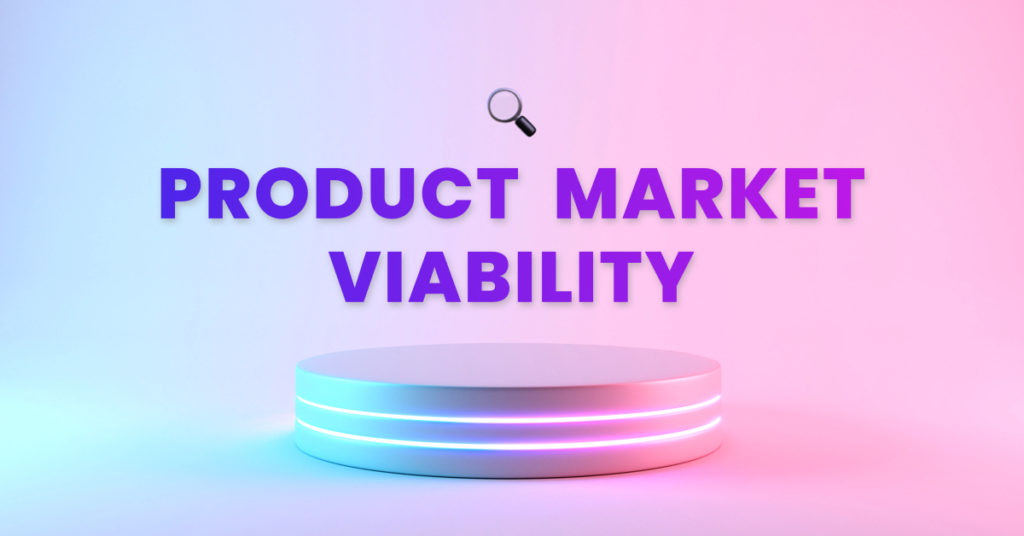Product Market Viability
Businesses are always on the lookout for expansion opportunities. That means finding new markets or offering new products in current markets for many. Yet, entering new markets and ensuring product market viability requires a step-by-step approach.
What is Product Market Viability?
So, what constitutes product market viability?
Market viability
To evaluate the market viability of a product, you have to look at three areas:
- Target market – know your customers, the demographics, traits, and behaviors, what type of product they seek, and what they can afford?
- The size of the market – is there room for growth so that new sellers can enter and prosper?
- Competitors – what is the competitive environment like? Who are the leading competitors and what are their strengths and weaknesses?
Product viability
Product viability is equally as important as market viability. It refers to the profit potential of a product. To determine the product profit potential, you have to understand the following.
- Demand – is there enough demand in the market to ensure that the product sells swiftly?
- Profit margins – can you sell the product at a competitive price that covers the cost and still delivers an acceptable profit margin?
7 Steps to Finding a Profitable Product
There are seven steps to finding a profitable product and a viable market. All are crucial for business success.
Step 1: Conduct Market Research
Market research is essential to understanding the size of the market. It can also help you to evaluate how many consumerswill want to buy your product. Market research starts with identifying the target market.
Pay close attention to the target market traits and buying habits. This will help you to understand the needs and wishes of your potential customers. In increasingly competitive markets, you have to find a product that appeals to your target market. It has to fulfill a need or offer extra features that competitor products have missed.
You will use the target market demographics to tailor-make your advertising and social media marketing plans.
Step 2: Determine the Product Criteria
The product criteria can have a significant impact on the profitability of your product. Here are some of the criteria to consider
- Size and weight – size will affect shipping costs and storage requirements. Heavy items cost more to ship.
- Fragility – Fragility items may cost more to pack and deliver. You also run the risk of in-transit breakages if your product is fragile.
- Perishable goods – add complexity to the business. You may not sell the goods before they expire, or they may expire in transit.
- Product life cycle – how long will the product last? An important consideration if you are hoping to grow your business on repeat sales.
Step 3: Conduct a Competitive Analysis
Find out which businesses offer products like yours. It is also worth looking at substitute products. Make a spreadsheet of the competitors locally and abroad. Add details such as price, reviews, advertising, and social media presence.
Check whether your product offers advantages over the product currently on offer. Advantages may include lower prices, unique features, top-quality materials, or superior service. Only products with a competitive advantage can make a profit in today’s competitive marketplace.
Read customer feedback about products like yours. Find out what customers like and dislike about competing for product offerings. Use this information to tailor your proposition to their needs.
Analyze competitor sales funnels to understand customer touchpoints throughout the purchase experience. Consider competitors’ marketing strategies, including how they connect on social media.
Also, take note of any seasonality. Seasonality can affect your cash flow and the levels of inventory you will have to hold. Relying on seasonal sales adds another level of complexity to the business environment, so it is better to avoid such products.
Step 4: Understand the Competitive Environment
Understand the external threats and opportunities in the competitive environment. You must have a full appreciation of the environmental factors that could render your product obsolete. Build some flexibility into your strategy to allow for unexpected changes in the market. They can and will happen.
Consider the following areas:
- Market trends and technology – new technologies and market changes have often changed buying patterns. Consider how digital music closed down music shops. Almost overnight music vendors no longer had a profitable product.
- Government regulation – how will regulatory changes affect the sale of your products. afety and environmental issues could lead to changes in the future.
- Political changes – can put pressure on both markets and supply chains.
- Economic changes – how will changing fuel prices, interest rates, and such affect your sales?
Step 5: Calculate the product price
In calculating the product price, you have to find a number that is both competitive and can still deliver an acceptable profit.
The positioning of your product is all-important. If your product is a commodity, you will find it difficult to compete on price or make a decent profit. Still, if you can differentiate your product, you could charge higher prices and make a healthy profit.
Many businesses compromise by offering a mixed product range, including commodity and niche products. However, it is best to limit the number of products since large numbers of stock-keeping units or SKUs add to the cost and complexity of the business.
Step 6: Calculate your profitability
Before you buy any inventory, make sure that you can make a decent profit. Create a budget forecast. Calculate all your product and marketing costs. These should include:
- Manufacturing costs
- Shipping and delivery fees
- Marketing costs
- Advertising costs
- Employee costs
- Interest
- Taxes
When you understand how many potential buyers you will reach, you can use the information to do a profit forecast by subtracting the costs from the estimated sales.
Step 7: Take action
Once you have done all your research and decided on the most profitable products to take to market, it’s time to take action. Order your stock. Embark on your marketing plan through social media and advertising. Set up your distribution channels and take orders.
This is just the beginning. As you start to sell your product, you must run the analytics to understand which strategies work best. Sales and marketing are all about understanding what works and then tweaking your plans to make the best of your winning strategies.
You have to keep a constant eye on the markets and hold your competitors in your sights. Otherwise,, someone else may unexpectedly come along and swoop on your target market.
Optimize Your Listing
No matter how careful you are in choosing your product, you won’t sell anything unless your listing attracts traffic. When buyers look for products, they use keywords. Unless your listings are search engine optimized and carry all the relevant keywords, your product won’t show up.
If you’re an Amazon seller and you’re present in more than one country, not only will you need a fully translated listing, but you will also need country-specific optimization. People in different countries with different cultures use different keywords to find products. Your listing keywords must find them.

This is where the team at Margin can help you to expand your business across the continent. Our team of native language speakers has worked for us for years.
They translate Amazon listings into their native language. Our speakers are trained in local SEO and they know the culture and colloquialisms in the country in which they live. They pride themselves on taking listings to the top of the Amazon ranks. Let us help you to make a success of your new venture.





